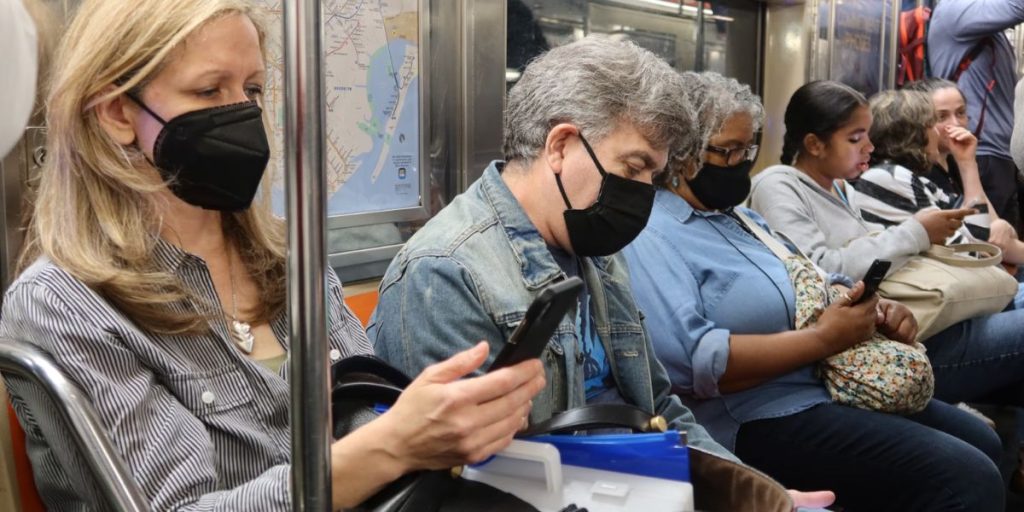Some hospitals in the United States are reintroducing indoor masking regulations in response to an increase in cases and admissions for respiratory infections such as COVID-19 and influenza.
According to an ABC News count, hospitals in at least six states have implemented masking guidelines: California, Illinois, Massachusetts, North Carolina, Washington, and Wisconsin.
Mass General Brigham, Massachusetts’ largest health system, said ABC News over the weekend that it had issued guidelines requiring employee caregivers and those working in patient care areas to wear masks.
Dana-Farber Cancer Institute in Boston notified ABC News that it reinstated its masking requirement on December 18 due to rising rates of respiratory ailments.
- California RESIDENTS To RECEIVE $500 MONTHLY PAYMENTS In New Guaranteed Income Program: Here Is Who Is Eligible
- Us Job Market Booms With 272,000 New Jobs, But Unemployment Rises Slightly To 4.0%
- Credit Scores Of 720+ See Improved Loan Rates This Week
- Examining The Facts: Fact Check On IRS $8700 Stimulus Check Eligibility & Payment Dates
- Gas Prices On Downward Trend As Fourth Of July Road Trips Approach: AAA

Additionally, Cook County Health, which operates hospitals and community health centers in and around Chicago, stated on its website that on December 26th, all staff, patients, and visitors aged 2 and older were required to wear masks in waiting rooms and patient exam rooms.
Furthermore, a Los Angeles County Public Health order requiring all health care personnel to wear masks when in contact with patients or working in patient care areas took effect after the county’s COVID-19 hospital admission level reached the “medium” threshold, which means between 10 and 19.9 new COVID-19 hospital admissions per 100,000.
Dr. John Brownstein, an epidemiologist and chief innovation officer at Boston Children’s Hospital and an ABC News contributor stated that hospitals are full of children and workers who are in danger of severe disease, which is why mask requirements have been reintroduced as cases rise.
“Ultimately, health systems, hospitals, places that deliver care are going to see some of the most vulnerable and at-risk individuals — many, with underlying conditions,” he went on to say. “Those are especially the places where we want to protect individuals and so when we have this rapid rise in respiratory illness, those are going to be the first places to try to use measures to reduce chances of transmission, both to protect patients, those receiving care, as well as workforce.”
According to CDC data, 31 states, plus Washington, D.C., are experiencing “high” or “very high” levels of respiratory illness activity, defined as people visiting their primary care office or emergency departments with respiratory complaints such as fever, sore throat, or cough.
In the words of the CDC, there were 29,059 new weekly hospital admissions due to COVID-19 for the week ending Dec. 23, the most recent date for which data is available. It is the highest level reported since late January 2023 and the seventh straight week of growth.
Meanwhile, the CDC reports 14,732 new hospital admissions connected to influenza for the week ending Dec. 23, up from 9,930 the previous week.
Brownstein believes the uptick is unsurprising considering that the United States is in the midst of respiratory virus season, as well as recent Christmas travel and gatherings.
“While there’s nothing unusual about what we’re seeing, the data still reflects an increase in illness and, as we know, masking will be helpful, regardless of the respiratory pathogen: RSV, COVID, flu, and the other respiratory pathogens that are circulating,” he went on to say.“So, it’s sort of a one-size-fits-all strategy.”
Because an increase in respiratory infections risks taxing the health-care system, Brownstein advises staying at home when sick and getting medical attention if symptoms worsen or do not improve.
“Of course, we’re in a situation where there’s a lot of illness out in the population, but we want to make sure that we limit the impact on hospitals and save care for those who especially need it,” he told reporters.
“If people need to use the emergency department, they absolutely should, but we’re in a moment now where capacity definitely is a big topic of focus for hospitals that are trying to both maintain their ability to take care of patients with severe illness as a result of these pathogens, but also be able to manage routine care as well.”
